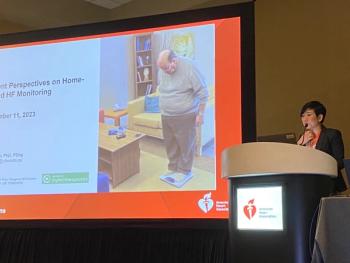
Online education tools help open the lines of patient communication
Patients' expectations regarding their physicians and their overall healthcare experience have changed significantly over the past decade. With their desire to become more empowered healthcare consumers and their growing intolerance for physicians who habitually run late or surgeons who are poor communicators, the attitudes and desires of patients are beginning to influence practices and procedures at physician offices, hospitals, and medical practices nationwide.
Today's healthcare providers and their staffs must work diligently to provide both a higher level of care and service, and a better patient experience. It's important that these efforts go well beyond simply providing a friendly office staff or satisfactory hospitalization. Healthcare providers must ensure that their patients are truly informed, educated and know what to expect from their medical procedures. Such an approach provides many benefits, including:
Newer technologies, including Web-based patient education and risk management tools, will enable healthcare providers to achieve these goals, as well as many others.
Once upon a time, patients accepted long waits to see their physicians. And once upon a time, a physician's instructions were accepted without question. But no more. Due in large part to baby boomers (those people born between 1945 to 1964), who demand responsiveness and accountability, today's patients have higher expectations of their healthcare providers. These expectations, along with growing choices of providers, have empowered patients to walk away from physicians who don't meet their needs.
What key factors trigger patient dissatisfaction? Sometimes it's as simple as bad "chemistry" between the patient and provider. Sometimes it is a poor treatment outcome. But most often, patient dissatisfaction with the healthcare provider can be traced to a lack of patient education and communication regarding an upcoming medical procedure. Patients must be able to answer simple questions to alleviate their concerns. These questions might include: "How long will the procedure take?"; "What exactly will be done to me?"; "When can I get back to my routine activities?"; and "How much pain will I have?"
Pamphlets, brochures, videos or even consultations with physicians often are not enough to answer these kinds of questions and concerns fully. Recent studies show that patients only retain 20% of the information they hear during their physician consultations. The consequences of this lack of understanding are significant. Patients who do not understand their health status, their procedure, and pre-and post-operative care requirements are much more likely to become non-compliant, placing them at greater risk for readmission or additional office visits. What's more, if the outcome of the surgical procedure is less than the patient expected, and if the patient has never built a connection with his or her physician, the combination of these factors could lead to litigation. According to studies in leading medical journals and the real-world experiences of physicians, medical groups and hospitals, many lawsuits today are the result of poor communication and mismanaged expectations.
Poor patient communication also leads to another key problem for physicians-reduced office productivity. When a patient's procedural or pre-operative concerns, fears and questions are not fully answered by the physician in an office visit, the likelihood of patient callbacks and even procedure cancellations is increased, thereby contributing to the inefficient use of staff time. Equally important, the opportunity to build vital patient rapport and address the most troublesome questions with the patient may be lost.
Newsletter
Get the latest industry news, event updates, and more from Managed healthcare Executive.






















































